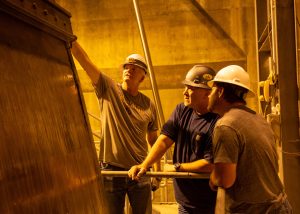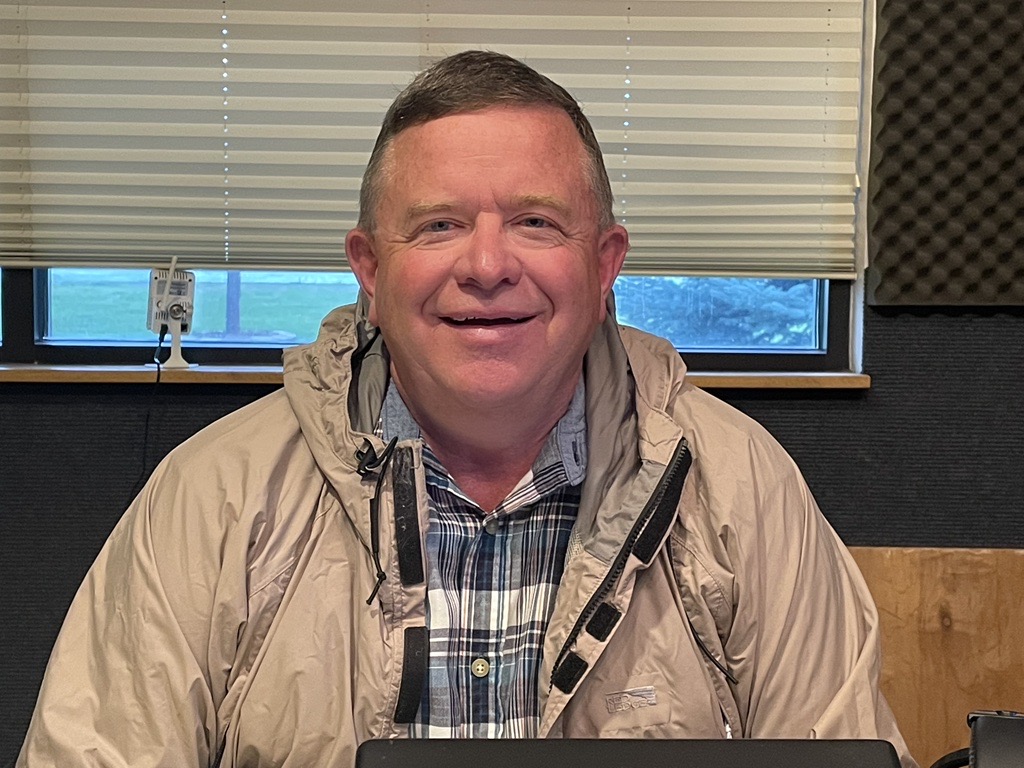Working Just Fine: Buffalo Bill Dam Passes Six-Year Spillway Test
Written by Andrew-Rossi on August 25, 2022
The Buffalo Bill Dam fulfills an essential purpose every day, but a test by the Bureau of Reclamation proves it will work safely and efficiently when it needs to release some of the water it contains.
The Bureau of Reclamation’s Wyoming Area Office completed a full travel gate testing at Buffalo Bill Dam outside of Cody, Wyoming. The test took place between August 22 and 24.
Reclamation employees perform full travel testing every six years on Buffalo Bill Dam’s two spillway gates. The sexennial tests ensure the massive 28-foot by 20-foot, stainless steel faced gates work to their total capacity when called upon to open and release water from Buffalo Bill Reservoir.
“The last time that we did a full travel test at this facility was in 2015,” said Mark Skoric, Big Horn Basin Facilities Manager. “We were delayed one year due to the COVID-19 pandemic, so we are excited to complete the testing.”
While the full travel test is done in six-year intervals, Reclamation does a 10 percent test yearly to ensure everything is in working order. This mandated testing integrates Operations and Maintenance work activities alongside Reclamation’s Safety of Dams Program.
The planning, safe execution, and examination exemplify Reclamation’s careful dedication to ensuring water is reliably delivered to the state of Wyoming and the American West.
Starting Aug. 22, the Reclamation employees of Buffalo Bill Dam began preparing to test the gates. First, however, the water from the reservoir needed to be stopped to start the evaluation.
The process of cutting off the water began by lifting massive steel stop logs with rubber seals down the upstream face of the spillway structure, closing the flow of water to the gates. This process was done with the help of a crane and a special rigging that allowed for the logs to be released from the topside of the dam.
Once the stop logs were in place, the void immediately behind the spillway gate was drained, and the differential pressure created pressed the stop logs firmly in place. After the water was drained, the gates were unrestricted to maneuver freely without water flows from the reservoir.
The employees and engineer teams then maneuvered the gate fully open. While the gate was moving, it was timed and visually inspected. The gate was checked for deterioration and rubber seal condition. Furthermore, the massive hydraulic cylinder was examined as it lifted the load.
Upon completion, the team closed the gate, refilled the void behind it, relieved the pressure, and lifted the stop logs out of place. Then, the same process began on the dam’s second gate.
“All in all, we had a successful and safe examination on both gates,” said Skoric. “Both are fully operational and doing what they need to do to ensure water flows from Buffalo Bill Dam when required.”
The Buffalo Bill Dam spillways served their essential purpose recently to release excess water from the at-capacity reservoir earlier this summer. It was the first time both spillways were open in five years.
The Buffalo Bill Dam, on the Shoshone River about four miles upstream from Cody, Wyoming, is a concrete arch structure of constant radius. The structural height is 350 feet, and the volume is 87,515 cubic yards. It is one of the first high concrete dams built in the United States.
The reservoir impounds 646,565 acre-feet of water.





